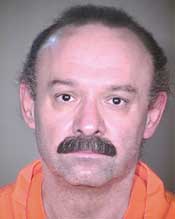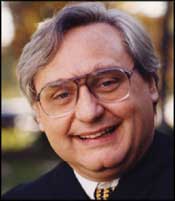BY LINDA BENTLEY | JULY 30, 2014
After 23 years on death row, execution a go
‘Using drugs meant for individuals with medical needs to carry out executions is a misguided effort to mask the brutality of executions …’
 PHOENIX – On Tuesday, July 22, the U.S. Supreme Court rejected Joseph Rudolph Wood, III’s last minute appeal to stay his execution, siding with the Arizona Attorney General.
PHOENIX – On Tuesday, July 22, the U.S. Supreme Court rejected Joseph Rudolph Wood, III’s last minute appeal to stay his execution, siding with the Arizona Attorney General.
It seems as though the newest trend in arguments to delay executions is to challenge the secrecy surrounding the drugs used, with attorneys arguing death row inmates have a First Amendment right to know who the supplier is, the drugs’ expiration dates and/or the qualifications of the person administering them.
In March, Arizona Attorney General Tom Horne announced that Arizona Department of Corrections (DOC) had changed its lethal injection protocol to allow for the additional use of a two-drug protocol using Medazolam and Hydromorphone in carrying out executions.
According to Horne, “The two-drug protocol has already been used in Ohio, and Arizona will be using an even greater concentration. Because of Arizona’s confidentiality law (A.R.S. § 13-757(C)) the compound pharmacist and/or company that provides these drugs to the Arizona DOC will remain confidential.”
Horne said it is very important for people to understand the reason Arizona and 31 states across the country are finding it difficult, if not impossible, to obtain pentobarbital, which has been used to carry out Arizona’s last 11 executions since 2011 and why the source of the drugs is confidential.
Courts across the country determined pentobarbital complied with the 8th Amendment’s prohibition against cruel and unusual punishment and in Arizona there has been no evidence any inmate suffered pain during execution.
However, after challenges to the use of pentobarbital proved unsuccessful in the courts, counsel for death row inmates decided to switch things up and attack the suppliers of the drug and demand the source be revealed.
As a result, compounding pharmacies in Texas and Oklahoma that had been providing pentobarbital for executions began refusing to provide it once their identities were made public and they began receiving threats from opponents to capital punishment.
This caused companies to stop supplying the drug to the DOC to carry out executions.
Their refusal to provide the drugs has become a public safety issue and drives home why states have a legitimate interest in keeping the source of the drugs confidential.
Horne stated, “The Arizona DOC carries out executions in a constitutional manner and in a way that is transparent to the public. But transparency has its limits when used to undermine government agencies from carrying out their lawful duties. Arizona had an extremely effective protocol for carrying out executions that withstood court challenges, but the legal maneuvering and game playing has caused the once plentiful supply of that protocol (pentobarbital) to stop.”
Last Saturday, four days before his scheduled execution, the Ninth Circuit Court of Appeals granted Wood a preliminary injunction to postpone his execution until the state revealed the details of the two-drug combination to be used to execute him.
However, on Tuesday, the Supreme Court upheld Arizona’s privacy laws, overturning the Ninth Circuit’s grant of a stay.
When the warrant of execution was issued on May 28, 2014, ordering the execution to take place Wednesday, July 23, it provided Wood with a choice of execution by either lethal injection or lethal gas.
The warrant stated if Wood failed to choose one or the other and notify the Department of Corrections of his decision, “the penalty of death shall be inflicted by lethal injection.”
Wood, 55, was convicted in 1991 of murdering his 29-year old girlfriend, Debbie Dietz and her father Gene Dietz, 55, in August 1989.
Wood and Deitz’s five-year, on-again off-again tumultuous relationship also involved numerous domestic violence incidents.
On Aug, 7, 1989, Wood arrived at the body shop owned by Dietz’s family and where she also worked and shot her father in the chest with a .38 caliber revolver.
Wood then sought out Deitz, placed her in some sort of hold and shot her once in the abdomen and again in the chest, killing her.
Two police officers approached Wood, who fled the building after killing Dietz and her father, and ordered him to drop his weapon.
Wood placed the gun on the ground but then picked it up and pointed it at the officers, who fired and struck Wood multiple times.
After recovering from extensive surgery, Wood stood trial for the double homicide in February 1991, was found guilty and sentenced to death that July.
Wood’s execution commenced at 1:52 p.m. on Wednesday, July 23, with radically varying accounts of what happened next and until Wood was pronounced dead one hour and 57 minutes later.
The Arizona Supreme Court convened a telephonic hearing with Wood’s defense lawyer and an attorney for the state while the execution was underway with Wood’s attorney attempting to halt the execution.
He claimed in his filing, “He has been gasping for more than an hour. He’s still alive.”
The court was informed of Wood being pronounced dead while the hearing was still in progress.
The DOC issued a statement following the execution saying it had followed protocol in the execution of Wood, re-affirming his “deep-sedation” seven times before he was pronounced dead, claiming aside from snoring, Wood did not make grimaces or otherwise move.
Governor Jan Brewer also issued a statement following the execution of Wood, stating, “I am concerned by the length of time it took for the administered drug protocol to complete the lawful execution of the convicted double murderer, Joseph Wood. While justice was carried out today, I directed the Department of Corrections to conduct a full review of the process.
“One thing is certain, however, inmate Wood died in a lawful manner and by eyewitness and medical accounts he did not suffer. This is in stark comparison to the gruesome, vicious suffering that he inflicted on his two victims – and the lifetime of suffering he has caused their family.”
 On July 21, dissenting from the en banc denial to rehear Wood’s last-ditch appeal for a stay of execution, Ninth Circuit Court of Appeals Chief Judge Alex Kozinski (r) noted he had little doubt the Supreme Court would thwart the latest attempt to interfere with Arizona’s efforts to carry out its lawful sentence of execution, and stated, “I take the occasion to point out how we got here.”
On July 21, dissenting from the en banc denial to rehear Wood’s last-ditch appeal for a stay of execution, Ninth Circuit Court of Appeals Chief Judge Alex Kozinski (r) noted he had little doubt the Supreme Court would thwart the latest attempt to interfere with Arizona’s efforts to carry out its lawful sentence of execution, and stated, “I take the occasion to point out how we got here.”
Kozinski wrote, “Until about three decades ago, executions were carried out by means designated for that purpose alone: electric chairs were the most common, but gas chambers, hanging and the occasional firing squad were also practiced.”
Despite most of those methods being unsuccessfully challenged on Eighth Amendment grounds, beginning in the late 1970s states began moving away from those traditional methods of execution and began employing drugs for that purpose.
Kozinski said it might have been done with the belief it would forestall another constitutional challenge, that it was more humane or perhaps because it seemed less brutal.
Whatever the reason, he said all states that have retained capital punishment authorize the use of drugs to carry out executions and it is generally the default method, as it is in Arizona.
Calling the switch to drugs “misguided,” Kozinski said, “subverting medicines meant to heal the human body to the opposite purpose was an enterprise doomed to failure.”
He called Wood’s case “only the latest in an unending effort to undermine and discredit this method of carrying out lawful executions.”
And because California state officials are either unwilling or unable to come up with an execution protocol, Kozinski stated, “Old age, not execution, is the most serious risk factor for inmates at the San Quentin death row.”
Kozinski said, regardless of what happened in Wood’s case, the attacks will not stop because the “enterprise is flawed.”
He said, “Using drugs meant for individuals with medical needs to carry out executions is a misguided effort to mask the brutality of executions by making them look serene and peaceful …”
Kozinski stated executions are “brutal, savage events, and nothing the state tries to do can mask that reality. Nor should it. If we as a society want to carry out executions, we should be willing to face the fact that the state is committing a horrendous brutality on our behalf.”
He suggested states wishing to continue carrying out the death penalty “should turn away from this misguided path and return to more primitive – and foolproof – methods of execution.”
Calling the guillotine the best method but “inconsistent with our national ethos,” Kosinski noted the electric chair, hanging and the gas chamber are each subject to occasional mishaps.
He called a return to firing squads as the most promising, pointing out “eight or 10 large-caliber rifle bullets fired at close range can inflict massive damage, causing instant death every time,” and said there are plenty of people employed by the state who can pull the trigger and have the training to hit their target.
“And,” he said, “nobody can argue that the weapons are put to a purpose for which they were not intended: firearms have no purpose other than destroying their targets.
Yes, it’s messy, but according to Kozinski, if we’re willing to carry out executions, we shouldn’t shield ourselves from the reality we are shedding human blood.
Kozinski also pointed out a tremendous amount of taxpayer resources have gone toward defending a procedure that he calls “inherently flawed and doomed to failure,” and said the state would be better to “own up that using drugs is a mistake and come up with something that will work, instead.”



